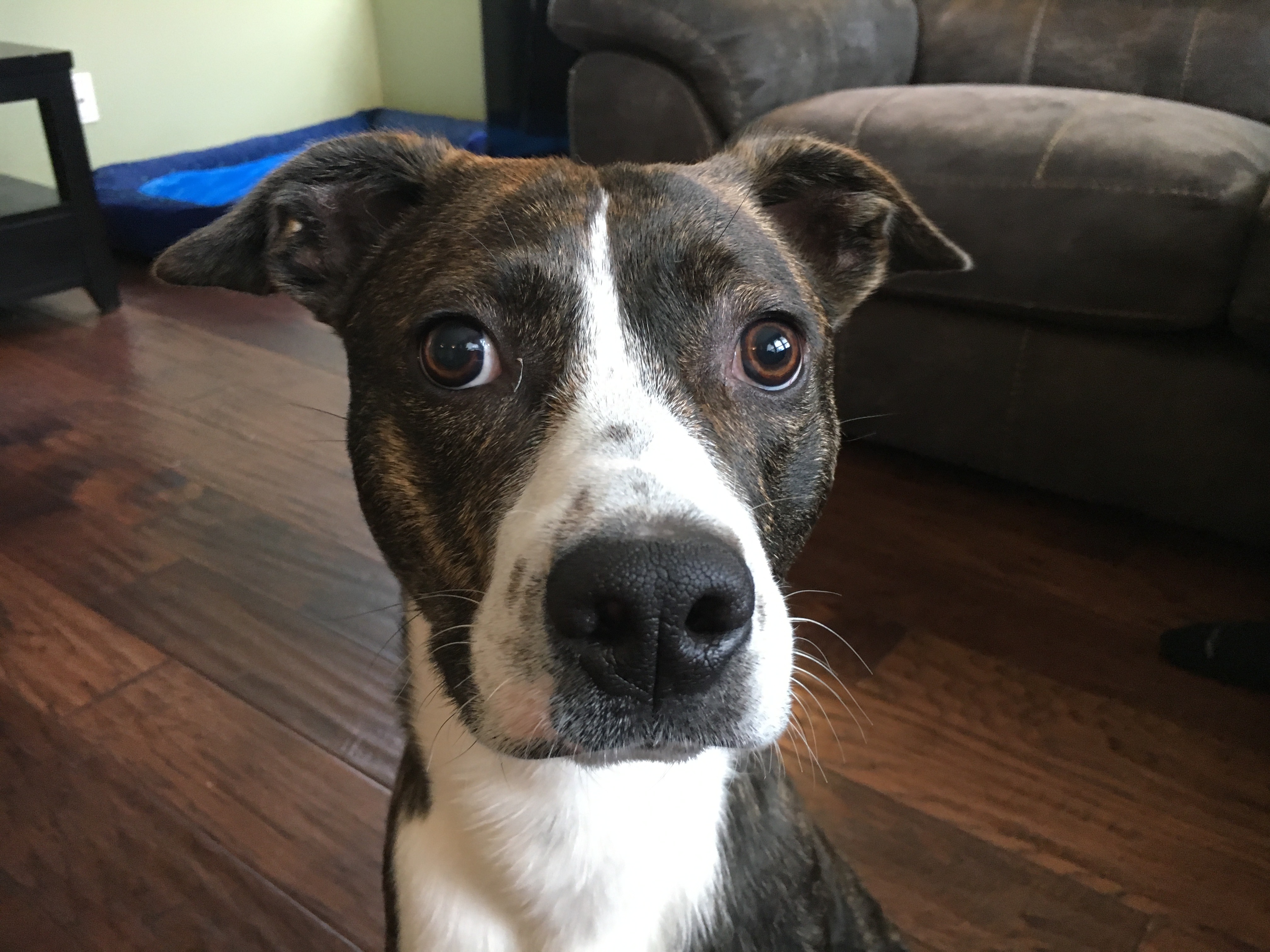Teaching a Super High Energy Dog to Focus to Develop Self Control
By: David Codr
Published Date: September 17, 2018
Leo is a 1 year-old Boston Terrier mix who has an excitement and separation anxiety problem; injuring himself in kennels or excess barking when left alone and destroying things in the house (doors, door knobs).
Leo was pretty excited and nervous when I arrived for his session. He barked and jumped around excitedly but also was stiff, had dilated pupils and had his head on the swivel. You don’t have to specialize as a Boston Terrier Trainer to see this dog was nervous in the service.
I used some dog behaviorist tricks and was able to get Leo to settle down a little bit for a short while. But it quickly became apparent that a big part of Leo’s problem was that he is a very high energy dog.
When I sat down with the dog and guardian, Leo showed zero respect for personal space, clearly did not understand the concept of boundaries and raced around the room to such an extent that my very first question was how much exercise is this dog getting.
I have seen a number of dogs who only had minor behavior problems that grew to become major issues due to a lack of daily exercise. Leo very easily could fall into this category. He was clearly insecure and the added factor of overflowing energy was amplifying it.
I suggested that the guardian start an exercise journal and keep it for a few weeks. This will allow him to mark down the time and duration of walks or number of repetitions for alternative forms of exercise like the fetch, running up and down the stairs, chasing the laser or scent games. At the end of each day, the guardian should assign a letter grade of a through F.
For any day where the dog does not achieve an “A” rating, the guardian should vary the exercise quantities and number of activities the following day until he comes up with a combination that results in an A+ day.
Because Leo was reactive and sometimes aggressive to people, I wanted to show his guardian how he could redirect his attention before he got into trouble. One of my preferred ways of doing this is to teach the dog to focus on the humans face on command.
As you can see, Leo was still very jumpy and uncertain as to whether not he trusted me. I could tell this was a trust factor by how quickly he would move away or the distance he included in between us when he sat down.
After we shot the above free dog training video, I walked the guardian through this exercise with Leo until he got the same result. It’s going to be important for the guardian and his roommates to practice this focus exercise a few times a day every day for the next week so that Leo can get up to that 15 second focus.
Leo seems to be a pretty smart dog and so his guardian would be well advised to try to teach the dog a new trick or command every week. This can boost the dogs self-esteem and confidence and also give the guardian a number of creative ways to redirect the dog’s attention before he can get into trouble.
I really enjoyed working with Leo but left the session concerned about his future. Leo is at a crossroads. If his guardian dramatically increases his daily exercise while simultaneously teaching him new tricks and commands and providing structure in his day-to-day life, he could turn into an amazing dog.
But if the guardian does not start increasing his daily exercise (considerably) and fails to incorporate rules structure and ways to boost the dog’s self-esteem, I could easily see Leo biting someone or engaging in other behaviors that would be problematic for everyone involved.
To help the guardian remember all the positive dog behavior tips that we covered in this in-home dog training session, we shot a roadmap to success.
Categorized in: Dog Behavior


